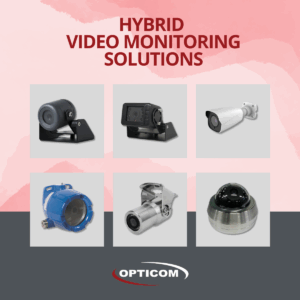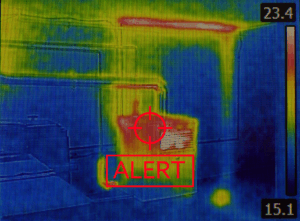In industrial environments, standard video monitoring systems often fall short of meeting specific operational demands. Niche industries like sawmills, mining operations, and food processing plants require surveillance solutions that can withstand harsh conditions and address unique challenges.
In niche industries, boxed solutions don’t work because they are tailored for wide applications, like shopping malls and other commercial buildings. It’s a two-fold challenge:
- You need ruggedized video monitoring solutions
- Your real-time monitoring needs to be robust and reliable
Why? Let’s find out.
The Importance of Custom Video Monitoring Systems
Each industrial sector presents distinct challenges that influence its surveillance needs:
- Sawmills: High-vibration environments with dust and debris need cameras that can endure physical impacts and provide clear imaging. Read more about the right cameras for sawmills.
- Mining Operations: Low-light conditions and exposure to harsh elements require cameras with superior durability and performance. Find out how to improve mining operations with the right video monitoring system.
- Food Processing Plants: Strict hygiene standards demand equipment that is easy to clean and resistant to bacteria and corrosion. Learn how video monitoring enhances food processing operations.
- Demolition: Cameras give demolition crews an eye on the inside without putting them in hazardous situations. Learn the benefits of video monitoring on demolition sites.
- Waste Management and Recycling: Facilities managing tons of waste material need a safe way to monitor heavy machinery and processing operations.
These are just a few examples of niche industries that have a hard time finding off-the-shelf video monitoring solutions that accomplish your goals.
Even within an industry, each facility is different. A comprehensive, customizable, scalable video monitoring solution allows the facility team to focus on other priorities rather than on constantly updating the video monitoring system.
The Building Blocks of a Custom Video Monitoring System
At Opticom Tech, we know that every plant, mine, or sawmill needs a customized approach — we’ve helped set many of them up. We have the building blocks to assemble a solution of hardware and software that gets you to your goals.
Here’s what goes into a custom video monitoring solution:
1. Cameras: The Core of Video Monitoring Systems
Briefly put, you have several options for ruggedized cameras built for industrial applications:
- Industrial Cameras: Built to withstand harsh conditions, these cameras are ideal for heavy industries.
- Explosion-rated Cameras: Suitable for hazardous environments where safety is paramount.
- Stainless Steel Cameras: Designed for environments requiring corrosion resistance and easy cleaning.
- Thermal Cameras: Useful in low-visibility conditions because they provide imaging based on heat signatures.
For example, Opticom’s CC04 camera is engineered to endure the harshest of environments. If it survived being hit by a log, it can survive almost anything.
2. Mounting Solutions
In harsh environments, the mounts are just as important as the cameras themselves because they provide stability and increase the cameras’ lifespan.
- Vibration-resistant Mounts: Essential for high-vibration environments like sawmills and manufacturing plants with heavy machinery.
- Adjustable Mounts: They allow for precise camera positioning, critical for detailed observation.
- Corrosion-resistant Mounts: Ideal for facilities exposed to chemicals or salty air, ensuring longevity and reliability.
3. Monitors and Displays
The right display solutions depend a lot on where monitoring is happening in your plant, mine, or sawmill. Is the operator watching the feed at a close proximity to the sawmill operations? Or is monitoring happening in the back office? Or both?
Our industrial customers typically need one of these two options:
- Industrial HD TVI Monitors: Designed for high-definition video signals and for non-HD (analog) video signals, they provide clear and detailed images.
- Industrial IP Network Monitors: They connect directly to your network, which ensures seamless integration with IP cameras.
4. Storage Solutions
Your choice of storage solution should follow the regulations in your field (some industries are required to keep the footage for longer) and meet your needs (do you need real-time feeds, recordings, or both).
In most cases, one of these three options is what you need:
- Digital video recorders (DVRs): They support multiple camera inputs and offer high-profile compression for efficient storage for analog or HD-TVI cameras.
- Network video recorders (NVRs): They are available in POE and non-POE versions, suitable for IP camera systems.
- Software Solutions: These are recommended for larger scale systems with 75+ network cameras.
How to Build a Custom Video Monitoring System for Niche Industries from Scratch
There is no one-size-fits-all here but there are two rules of thumb:
- Be very clear on the purpose of your monitoring system. Do you only need it for surveillance, do your operators need it in order to efficiently do their job, or do you want to use it to improve your operations? If you design, or have someone help you design, the right system, all of these goals can be accomplished.
- Build with scalability in mind. Your facility might expand. Or your scope may change to where you need cameras in new areas of your facility. Either way, it’s important to make sure that you can add new cameras, features, and accessories when you need them rather than redo the system from scratch.
These two rules of thumb ensure that you get the best ROI from your video monitoring system without paying a fortune for it. At Opticom Tech, we make sure that our customers can easily meet their video monitoring goals and that they don’t pay more than they need to for a system.
Not sure where to start building your custom video monitoring system? You don’t have to do it alone!
Schedule a free consultation with our experts.







